IPv4 vs IPv6: A Comprehensive Guide To The Two Internet Protocols
What is the Internet Protocol? What are the differences between IPv4 and IPv6? Continue reading to find answers to these and many other questions.

IP address, or Internet Protocol address, is a numerical label assigned to internet-connected devices, including laptops, printers or mobile devices on a particular network. The first version of the Internet Protocol was introduced in 1973, but IPv4 was the first to be used widely.
When IPv4 emerged, no one could have imagined the scale of the internet today. Unsurprisingly, as the internet expanded, the pool of unallocated IPv4 addresses drained fast, and in 2011, IANA (Internet Assigned Numbers Authority) officially exhausted its IPv4 free pool.
By this time, IPv6 was already introduced as an alternative with an astonishing number of IP addresses, but even today, the adoption of this version is surprisingly slow. IPv4 and IPv6 can coexist, but the former dominates the worldwide internet traffic.
To compare IPv4 vs. IPv6, we need to look at how these Internet Protocols emerged, what benefits they offer and what the main differences between IPv4 and IPv6 are.
What is IPv4?
IPv4 stands for Internet Protocol version 4, and it was first introduced in 1981 by DARPA as a connectionless protocol. An IPv4 address is 32 bit-long and is made up of four octets written in decimal digits between 0-255 and separated by dots. Each block represents one unique byte.
For example: 1.2.3.4 (ISP: APNIC Pty Ltd.) or 208.65.153.238 (ISP: Youtube LLC).
In total, there are 4,294,967,296 IPv4 addresses, and this number is set, meaning that it cannot expand. Forty years later, we are still dependent on IPv4, but the original creators failed to imagine the scale of the internet in the 2020s.
Back in the 1980s, 4.29 billion might have sounded like an unlimited number. Today, we are dealing with IPv4 exhaustion.
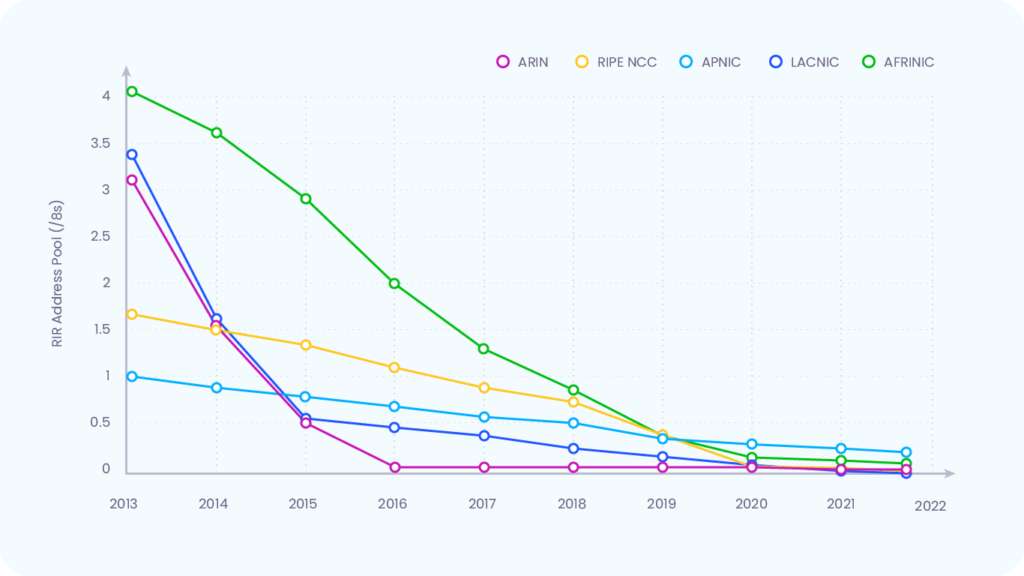
RIPE NCC, one of the five Regional Internet Registries that allocate internet number resources, ran out of IPv4 in November 2019. When the pools of IPv4 addresses drain, RIRs no longer have the resources to allocate or assign.
However, the need for IPv4 resources has not diminished. While IPv6 already offers a far greater number of unique addresses, the transition from IPv4 is not as smooth as imagined.
Benefits of using IPv4
The IPv4 infrastructure has been around for decades and is now fully developed and optimized. IPv4 is the most popular IP version to identify devices, which we cannot say about IPv6 yet.
Users of IPv4 don’t need to worry about upgrading their devices or finding experts who would take care of these upgrades. Working with this Internet Protocol version 4 is something that network operators are used to and don’t require additional training.
In the past, there were concerns that IPv4 is not as secure as IPv6. While that might have been true at one point, the security of the infrastructure has been upgraded as well. Now, security systems are in place to ensure that IPv4 networks are just as secure, as long as they are appropriately configured.
The benefits:
- Set-in-place infrastructure
- Fully optimized networks
- Stable security
What is IPv6?
IPv6 stands for Internet Protocol version 6, and it is the newest version of the Internet Protocol. It was introduced in 1995 by the Internet Engineering Task Force, and the exhaustion of IPv4 addresses was already evident by this point. Although the logical sequence suggests that IPv5 would precede IPv6, the so-called Internet Stream Protocol was never fully deployed.
One address is 128 bit-long, and while the first 64 bits represent the network portion, the last – the host portion. An IPv6 address comprises eight groups written in hexadecimal format using values between 0 and FFFF and colons.
For example, 2001:4860:4860::8888 (Google LLC). The double-colon in this technical format indicates that the middle segments represent zeroes. The fully expanded version of this address is 2001:4860:4860:0000:0000:0000:0000:8888.
There are 340,282,366,920,938,463,463,374,607,431,768,211,456 (340 undecillion) IPv6 addresses in total. Needless to say, when we compare IPv4 vs. IPv6 by numbers, there is no comparison, and the size of this address space is much more suitable for today’s IoT world.
That said, although IPv6 has been around for quite some time, and we do not need to worry about exhausting IPv6 addresses – at least, not in the near future – the adoption of this Internet Protocol has been excruciatingly slow.
According to Google, the availability of IPv6 connectivity among Google users was over 37% in September 2021. This means that IPv4 continues to carry the internet.
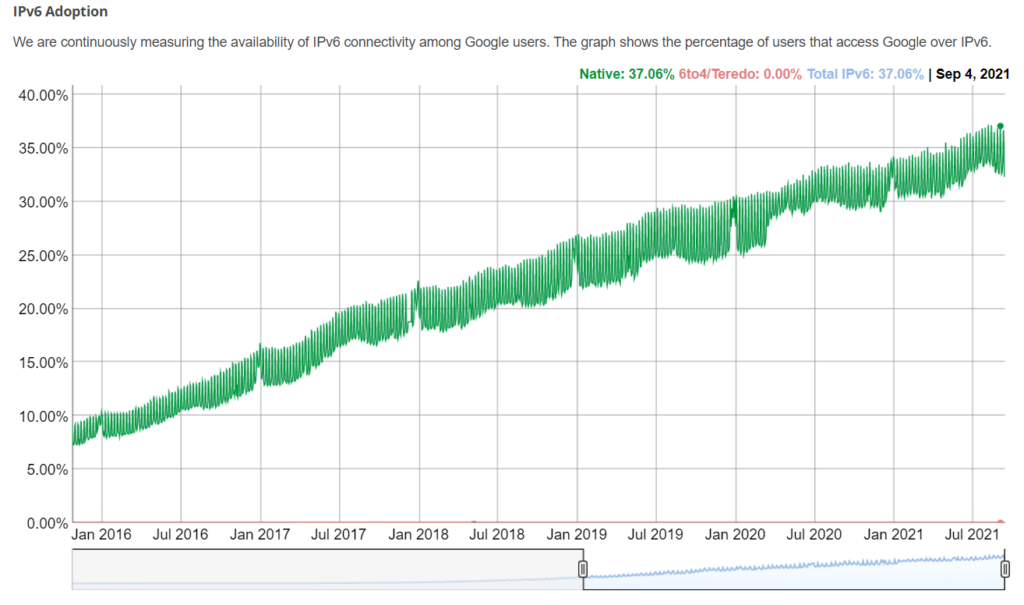
Benefits of using IPv6
IPv6 is the future of the internet. We will need to transition to IPv6 sooner or later, and when we do, we will not need to worry about IP address exhaustion due to numerous unique addresses available. At the moment, this is the most significant problem that the IPv4 infrastructure faces.
Complex configurations are the thing of the past with IPv6. While you need to assign IPv4 addresses for one system to communicate with other systems and perform firewall alterations, Pv6 offers stateless auto-configuration. During the process, the host finds an IPv6 router and requests a prefix, creates a link-local address and verifies that the address is unique.
The IPv6 infrastructure is also much more suitable for mobile networks. The IoT (Internet of Things) world is expanding quickly, and each device requires a unique IP address. The IPv6 infrastructure is completely ready to handle this requirement.
The benefits:
- More unique IP addresses
- Stateless auto-configuration
- Mobile network-friendly
Key differences between IPv4 and IPv6
Both IPv4 and IPv6 identify the connection between devices and relay information across the network, unlike a MAC address that identifies every device on the network instead. Both versions use the Transmission Control Protocol and can offer the same speed in direct connections. Nevertheless, there’s more than one difference between IPv4 and IPv6.

| 4.29 billion addresses | 340 undecillion addresses |
| 32 bit-long numeric addresses | 128 bit-long alphanumeric addresses |
| Numeric notation separated by dots 208.65.153.238 | Alphanumeric notation separated by colons 2001:4860:4860::8888 |
| Uses 5 classes of IP addresses | No IP address classes |
| Prefixes have up to two digits (1-32) | Prefixes have up to three digits (1-128) |
| Header range is 20-60 bytes | Header is exactly 40 bytes |
| Needs subnet masks | Does not use subnet masks |
| Supports multicast, unicast and broadcast addresses | Supports anycast, multicast and unicast addresses |
| No auto-configuration available | Auto-configuration is available |
| Requires NAT, DHCP, VLSM | Doesn’t require NAT, DHCP, VLSM |
| Supported by Routing Information Protocol | Not supported by Routing Information Protocol |
| Doesn’t mandate IPSec | Mandates IPSec |
| Less efficient QoS | More efficient QoS |
| Uses Internet Group Management Protocol | Uses Multicast Listener Discovery |
| Limited mobility and interoperability capabilities | Integrated mobility and interoperability capabilities |
| Maps to MAC addresses using Address Resolution Protocol | Maps to MAC addresses using Neighbor Discovery Protocol |
The comparison
As you can see, when it comes to comparing IPv4 vs IPv6, there’s more than just the obvious numeric address vs alphanumeric address difference.
While both versions contain extension headers, the IP address header of each IP is different.
The IPv4 infrastructure uses a subnet mask for every designated network, and the IPv6 infrastructure doesn’t use masks at all.
You also need to configure a newly installed system with an IPv4 address, but that is optional for IPv6, which also offers autoconfiguration capabilities.
Network Address Translation (NAT) supports IPv4, and a single NAT address can mask non-routable addresses, but IPv6 uses direct addressing instead. This means that connection occurs at the IP layer, and IPv6 users don’t need to deal with port forwarding.
IPv4 also uses Dynamic Host Configuration Protocol (DHCP) to obtain IPs. However, IPv6 users don’t need to access a dynamic host configuration server because of permanent addresses.
It’s also pretty obvious that Internet Protocol security is stronger for IPv6 due to IPSec integration. Furthermore, compared to IPv4, Quality of Service (QoS) handling is more efficient in IPv6 networks.
The future of Internet Protocols
The outcome of the IPv4 vs. IPv6 battle is murky, even though some believe that IPv6 will become the standard Internet Protocol. In any case, we don’t know when IPv6 will catch up and, eventually, overtake IPv4 in implementation.
The future of IPv4
Although IPv4 internet addresses might be exhausted, we still have ways to go before IPv6 becomes the standard Internet Protocol. While we wait for the technology and internet service providers to catch up, we have no other option but to work with what we have. Luckily, what we have is convenient and familiar.
Unfortunately, while IPv4 continues to be the convention, we are left dealing with the lack of IPs, which seriously hinders the growth of businesses across the globe. Buying or selling IPs might seem like the only logical step, but, in hindsight, not the most financially viable. Moreover, there are fewer and fewer opportunities to buy IPs.
Leasing is the gold standard for those wanting to monetize unused IP addresses and those in need of clean and reputable IPs. The IPXO Marketplace is the world’s first IP monetization and lease platform that serves both lessors and lessees. Lessors can turn their dormant IP addresses into profit, and lessees can use these unused IPs to scale their operations.
Reusing IP addresses helps build a sustainable internet that is not paralyzed by the lack of essential resources. Fortunately, plenty of IPv4 addresses are still unused. IPXO’s Marketplace can offer millions of reputable IPs that are ready as soon as you are.
The future of IPv6
While IPv6 may be the future of the internet, we don’t know yet when this future will come. Will we see IPv6 fully replace IPv4 by 2030? 2040? It isn’t reasonable to make such predictions at this time. At the end of the day, the advent of IPv6 is unlikely in the foreseeable future, and we have to find ways to create a sustainable internet with IPv4 today.
Internet service providers (ISPs), mobile carriers and data centers will go on to fully adopt IPv6 at some point. However, right now, the costs and time required for full data migration are simply too high.
There’s also a lack of motivation to move from the existing infrastructure, especially since IPv4 and IPv6 can coexist. Dual IP stacking, tunneling and NAT-PT can help achieve that.
- Dual IP stacking: Network hardware runs IPv4 and IPv6 simultaneously
- Tunneling: IPv6 data packets are encapsulated within IPv4 packets
- Network Address Translation-Protocol Translation: IPv4 packets are translated into IPv6 packets, or IPv6 packets are translated into IPv4 packets
All in all, IPv6 adoption is coming slowly but surely. Unsurprisingly, mobile networks are leading the way. In the US, T-Mobile is close to routing 100% of web traffic using IPv6, while AT&T and Comcast are close behind with 80% and 74% routing, respectively.
According to Google’s Per-Country IPv6 adoption statistics (September 2021), India is the number-one country in the world by IPv6 adoption at 62.82%, followed by Malaysia (54.56%), Germany (50.91%), Taiwan (48.39%) and Vietnam (48.58%). The US is currently at 45.75%.
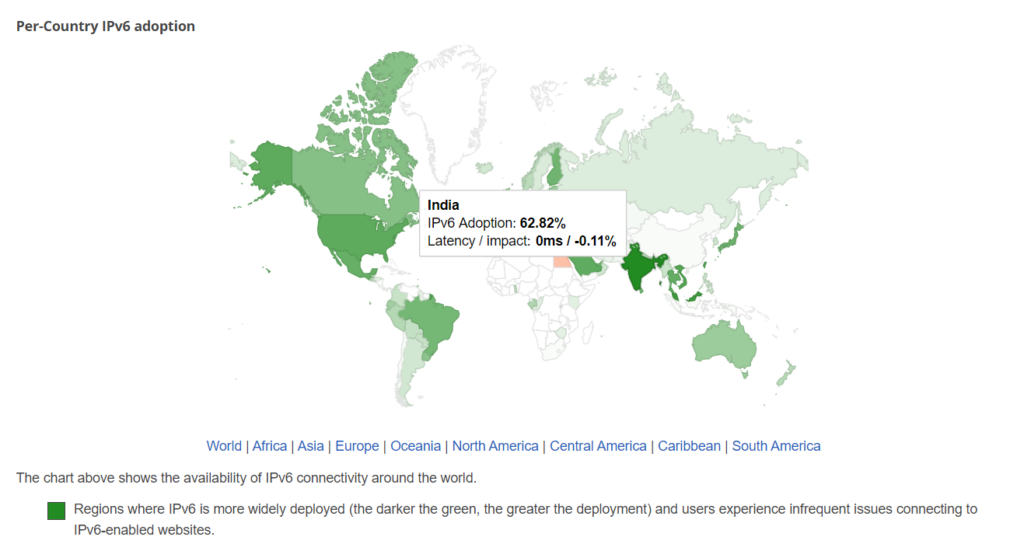
Conclusion
IPv6 may replace IPv4 one day, but that isn’t happening tomorrow. While IPv6 might be more mobile-network friendly, mandate IP security and provide a lot more IP addresses, IPv4 continues to carry the internet today.
Before IPv6 fully replaces IPv4, we will see both Internet Protocols coexisting. Right now, however, IPv4 addresses are exhausted, and more companies run into the problem of being unable to scale due to IP address shortage.
The good news is that a sustainable internet is not just a theoretical idea anymore, and we can grow without needing additional IPs.
As long as there are unused IPv4 addresses, there will be someone in need of them. Now is the perfect time to put dormant IPs to use and alleviate the global IPv4 shortage.
Your #1 IP lease & monetization platform
Fully automated. Fully accessible. Fully supported.
About the author
Table of contents
What is IPv4?
Benefits of using IPv4
What is IPv6?
Benefits of using IPv6
Key differences between IPv4 and IPv6
The comparison
The future of Internet Protocols
The future of IPv4
The future of IPv6
Conclusion
Related reading
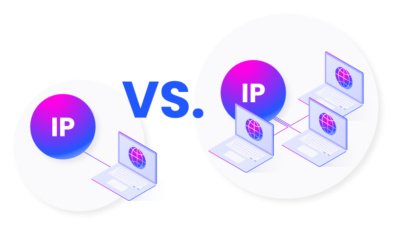
Dedicated IP vs. Shared IP Addresses for Email Marketing
What are the roles of dedicated and shared IPs in email marketing? Which option offers more benefits for businesses? We have the answers for you.
Read more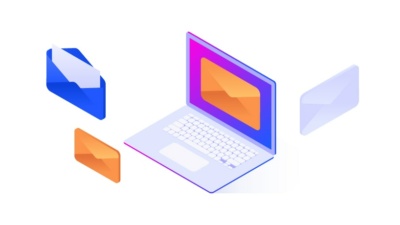
IP Warming for Email Campaigns: What Is It and Why Is It Important?
What is IP address warming? How does it work? What kinds of challenges can you face when warming IPs? How can you benefit from this practice? We've got all…
Read more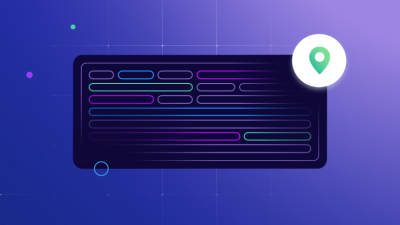
IPv4 Packet Header: Format and Structure
When you think about it, the IPv4 packet format is truly fascinating. Learn about the elements at play with this comprehensive guide.
Read moreSubscribe to the IPXO email and don’t miss any news!
